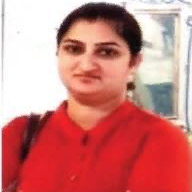International Journal of Image, Graphics and Signal Processing (IJIGSP)
IJIGSP Vol. 14, No. 6, 8 Dec. 2022
Cover page and Table of Contents: PDF (size: 585KB)
A Hierarchical Support Vector Machines for Weapons Identification Using Multiple Stabbed Wound Images
Full Text (PDF, 585KB), PP.84-94
Views: 0 Downloads: 0
Author(s)
Index Terms
Forensic, Identification, Patterns, Segmentation, Stab, Support Vector, Wounds.
Abstract
This paper proposes hierarchical support vector machines for weapon Identification using images of repeated stab wound patterns caused by sharp metal weapons used in homicidal cases and also presents a comparative study with standard flat support vector machine. The methodology includes the segmentation technique for the extraction of region-of-interest in the image using transition region-based segmentation algorithm and then texture, shape and size features were extracted from the segmented image. For multiple classes, a hierarchical support vector machine is adapted as a classifier. This approach gives a computationally interesting and efficient alternative solution to identify the weapons used in the crime; this method uses the digital images of repeated stab wound patterns which appear on the human body. The experimental study has three main stages, at the first stage includes generating of non-overlapping segments from the pattern, at the second stage the features of wound patterns are extracted and finally identification of patterns and its weapon of cause. The proposed method accuracy assessment is performed and also comparison study is performed with standard flat support vector machine and with the traditional method of forensic pathology. The experimental results achieved for Identification is 96.71% accuracy, with an available database of 500 images of a pattern consisting of repeated stabbed wounds. From the comparative study, the proposed methodology has given better results than standard SVM and traditional method. The proposed method delivers a better solution for identification from the image of the repeated stab wound pattern as there is no human intervention that reduces the error and data manipulation unlike traditional manual method.
Cite This Paper
Anil Kannur, Asha Kannur, "A Hierarchical Support Vector Machines for Weapons Identification Using Multiple Stabbed Wound Images", International Journal of Image, Graphics and Signal Processing(IJIGSP), Vol.14, No.6, pp. 84-94, 2022. DOI:10.5815/ijigsp.2022.06.07
Reference
[1]Anil Jain and Jung-Eun Lee, (2009), “Scars, marks, and tattoos: soft biometrics for identifying suspects and victims”, Journal of SPIE, the international society for optics and photonics, pp: 01-02
[2]B.S.Anami, D.G.Savakar, (2009), “Effect of Foreign Bodies on Classification and Classification of Bulk Food Grains Image Samples”, Journal of Applied Computer Science and Mathematics, Vol.3(6), pp: 77- 83.
[3]Song Bo, (2012) “Automated wound classification system based on image segmentation and Artificial Neural Networks”, IEEE International Conference on Bioinformatics and Biomedicine, pp: 11-16.
[4]Li Dongguang, (2008) “Firearm Classification System Based on Ballistics Image Processing”, Proceedings of CISP '08, Congress on Image and Signal Processing Vol: 3, pp: 149 – 154
[5]Li Dongguang, (2008) “Firearm Classification System Based on Ballistics Image Processing”, Proceedings of CISP '08, Congress on Image and Signal Processing Vol: 3, pp: 149 – 154
[6]Suapang P., Rangsit, et.al., (2011), ”Tool and Firearm Classification System Based on Image Processing”, Proceedings-11th International Conference on Control, Automation and Systems (ICCAS), pp: 178 – 182
[7]Francisco Veredas, Héctor Mesa, and Laura Morente, (2010)” Binary Tissue Classification on Wound Images With Neural Networks and Bayesian Classifiers”, IEEE transactions on medical imaging, Vol: 29, Issue No. 2, pp: 410-426.
[8]Jie Liu1, Jigui Sun, Shengsheng Wang, (2006) “Pattern Classification: An overview”, IJCSNS International Journal of Computer Science and Network Security, Vol:6, Issue No.6, pp: 57-61
[9]Qi Peter Li, and Biing-Hwang Juang, (2006) “Study of a Fast-Discriminative Training Algorithm for Pattern Classification”, IEEE transactions on neural networks, Vol: 17, Issue No. 5, pp-1212-1221
[10]Dayanand G Savakar, Anil Kannur (2015) “A Genetic algorithm and Bayesian approach for classification & classification of weapon based on the stab wound patterns caused by different sharp metal”, International Journal of Computer Engineering and Applications, Volume IX, Issue I, pp: 01-12.
[11]Ajay Kumar N, ChenyeWu, (2011) “Automated human classification using ear imaging”, Journal of Pattern Classification, Elsevier Ltd., pp: 1-13.
[12]Shuaibur Rahman, M. N. A. Khan, (2016) "Digital Forensics through Application Behavior Analysis", International Journal of Modern Education and Computer Science, Vol.8, No.6, pp.50-56.
[13]Rubayyi Alghamdi, et.al., (2016) “Hidden Markov Models (HMM) and Security Applications”, International Journal of Advanced Computer Science and Applications, Vol. 7, Issue 2, pp:39-47.
[14]Gitto L., Vullo A., Demari G.M., (2012) “Classification of the murder weapon by the analysis of a typical pattern of sharp force injury”, Italian Journal of Legal Medicine, Vol: 01, Issue No. 1, pp: 04-14.
[15]Ying Bai; Dali Wang, (2011)"Evaluate and identify optimal weapon systems using fuzzy multiple criteria decision making", Proceedings of IEEE International Conference on Fuzzy Systems, pp: 1510-1515.
[16]F.A. Andaló, A.V. Miranda, A.X.Falcão, (2009),” Shape feature extraction and description based on a tensor scale”, Journal of Pattern Classification, Elsevier Ltd, pp:1-11.
[17]Basavaraj S. Anami and Dayanand G. Savakar, (2011), “Suitability of Feature Extraction Methods in Classification and Classification of Grains, Fruits and Flowers”, International Journal of Food Engineering, Vol.7, Issue 1, Article 9, pp: 1-28, Publisher: Berkeley Electronic Press, Berkeley, U.S.A.
[18]Ying Bai; Dali Wang, (2011)"Evaluate and identify optimal weapon systems using fuzzy multiple criteria decision making", Proceedings of IEEE International Conference on Fuzzy Systems, pp: 1510-1515.
[19]Kaliszan M., Karnecki K., Akçan R., (2011) “Striated abrasions from a knife with a non-serrated blade—classification of the instrument of crime on the basis of an experiment with material evidence”, International Journal of Legal Medicine, Vol: 125, Issue No. 5, pp: 745–748
[20]Kaliszan M., Karnecki K., Akçan R., (2011) “Striated abrasions from a knife with a non-serrated blade—classification of the instrument of crime on the basis of an experiment with material evidence”, International Journal of Legal Medicine, Vol: 125, Issue No. 5, pp: 745–748

